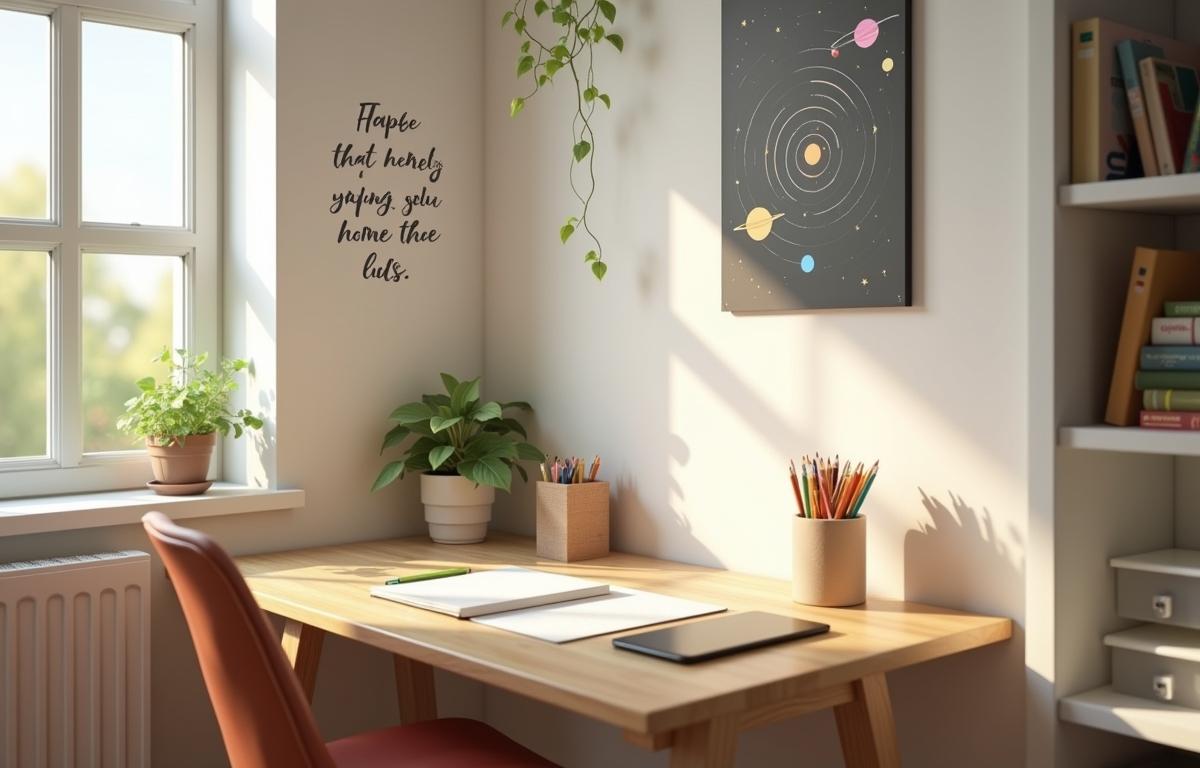Creating an effective learning environment at home can enhance your child’s homeschooling experience. It sets the tone for focused study sessions, sparks creativity, and reinforces good habits. With a few thoughtful adjustments, any room can morph into a supportive learning haven. Families looking for dependable ways to sharpen their day-to-day homeschool life can benefit from tried-and-true strategies, without getting lost in unnecessary details. There’s no single perfect formula for everyone, but each tip can be tailored to fit your family’s unique preferences.
Contents
Carving Out the Perfect Study Corner for Homeschooling
Finding the right spot for studying is often the first step to better learning habits. Start by looking for areas that get natural light and have enough space for a desk or table. Some families choose a quiet corner in the living room, while others dedicate an entire room to foster an academic feel.
Identifying a Calm, Distraction-Free Zone
A calm corner frees children from the noise that can interrupt their concentration. If possible, keep this space away from the TV, gaming systems, or other visually stimulating gadgets. Even if your home is bustling, noise-canceling headphones or screens can shield students from distractions and bring calm to their daily routine.
Stocking Up on Essential Homeschool Supplies
Having homeschool supplies organized and ready can keep momentum going through each lesson. Searching for pencils or loose papers wastes time and can break a child’s focus. When everything is at arm’s reach, your child can dip into important materials without leaving their seat.
Keeping Materials Visible but Orderly
Use a mix of shelves and simple storage boxes so children can see their items quickly. Transparent bins or labeled boxes can help them grab what they need in seconds. This method helps maintain tidiness and work efficiency at the same time.
Rotating Supplies for Variety
If younger learners become bored easily, rotate certain supplies or learning toys. Keep some favorites tucked away for a few days, then bring them back in a rotation. The novelty adds excitement and keeps engagement high.
Designing a Calming Homeschool Environment
A good homeschool environment includes more than just desks and books. Colors, wall décor, and lighting can all influence a child’s focus and mood. A welcoming setup encourages children to settle down, making study time less of a chore.
Using Subtle Colors and Meaningful Decorations
Shades of blue, green, or neutral tones can help children feel relaxed. Let your kids choose a few decorations that stimulate their curiosity: maybe a poster of the solar system, a timeline of world history, or motivational quotes. These personal touches enrich the atmosphere and add an element of fun.
Incorporating Nature and Fresh Air
Replenish energy levels by placing a plant or two next to the study area. If weather permits, open a window and let in a fresh breeze. These small additions can promote a sense of calm that keeps everyone positive throughout the day.
Creating a Consistent Routine for Home Learning
A fixed schedule can significantly boost productivity. Children thrive when they know what to expect, and a routine eases them into a learning mindset. Freeform days can work for some families, but generally, setting clear blocks of time fosters better discipline and focus.
Allotting Time for Breaks
Short breaks can do wonders for recharging a young mind. Encourage movement, stretching, or a quick snack between tasks. Returning refreshed can enhance the next study session and sustain concentration levels longer.
Coordinating Family Activities
If you have multiple children juggling different grades, set certain intervals when everyone is working together on similar tasks. This reduces chaos and encourages mutual support. Younger or older siblings might even inspire each other when side-by-side in the same room.
Encouraging Kids to Personalize Their Space
Allowing children to shape their own study areas can motivate them to engage wholeheartedly. Personalization fosters a sense of responsibility and ownership, reminding them that this spot exists for their growth.
Adding Comfort Without Overdoing It
Cozy pillows or soft chairs can make children more eager to stay in the space. Avoid adding too many plush items, though, since excessive comfort might hamper productivity. Striking the right balance helps kids remain relaxed yet alert.
Empowering Kids with Creative Input
Let them craft or design simple decorations. Maybe they design a poster with their favorite subject or write out a short inspirational message. Small arts-and-crafts projects forge a deeper connection to the area and keep spirits high.
Maintaining Momentum Over Time
Homeschool setups aren’t static; they grow and adapt as children progress in age and skill. It’s normal for the arrangement or style of your productive homeschooling space to change every so often. You might find a new storage method or realize that painting the walls bright yellow spurs more excitement.
Try listening to feedback from your children and stay tuned into their unique needs. They might enjoy a standing desk at some point or request a dedicated reading nook. When everyone stays open-minded, small adjustments can continue fueling a fulfilling learning experience right at home.
